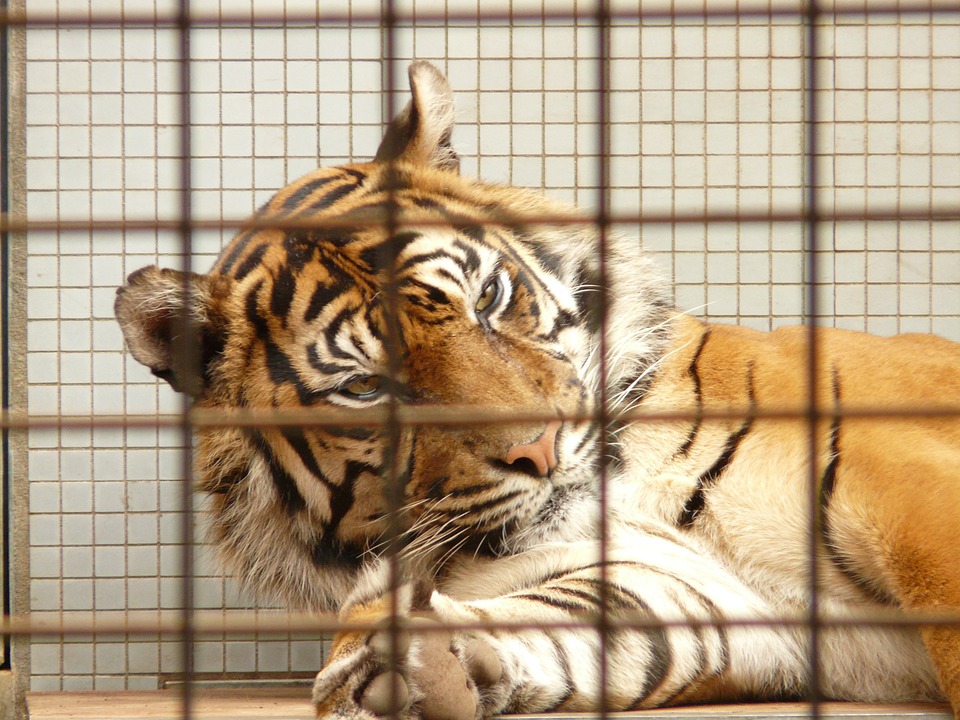
- Trade in tiger parts as medicine has been historically significant in China for many decades, and the traction and beliefs have only increased with the wealth of the nation.
- Having initiated tiger farms in their own country, and influencing other countries to open farms, China has long been making promises to phase out the farms following CITES’ regulations.
- As the Year of the Tiger approaches, many brands and businesses have started marketing campaigns with themes featuring the charismatic animal, but are yet to comprehend the price that tigers pay for their popularity.
- This post is a commentary. The views expressed are those of the authors, not necessarily of Mongabay.
On the 1st of February 2022, the Year of the Tiger starts. The Chinese zodiac is an increasingly popular pseudoscientific classification scheme with followers in Asian countries, like China, Japan, South Korea, Vietnam, Cambodia, Nepal, Bhutan, and Thailand.
Hundreds of millions of primarily Asian people observe the start of the Year of the Tiger, but most don’t realize what’s happening with tigers, be it in the wild or captivity. Is tiger conservation benefiting in any way from the Year of the Tiger?
Historical perspective of tigers and China
In the 20th century, Mao Zedong, to develop the Chinese empire, planned The Great Leap Forward. His plan eventually worked as we now see: China is a growing economy and an influence as a world power. However, in the first years, things went south, resulting in the Great Chinese Famine. Estimations vary from 15 to 55 million deaths.
Although he did not believe in them, Mao ordered to gather all possible folk cures to diseases, most of which were based on the placebo principle. The result was (another) little red book called Traditional Chinese Medicines (TCM). This was the beginning of the disappearance of Chinese wildlife, as animal ingredients were substantial in the TCM folk solutions.
By now, the South China tiger (Panthera tigris amoyensis) had almost become extinct in the wild. Before the 1950s, more than 4,000 individuals lived in the wild, but they died out due to the large-scale ‘anti-pest’ campaigns during Mao Zedong’s Great Leap Forward.
The Chinese TCM suppliers of wildlife extended their working terrain to other countries (Indonesia, Malaysia, Bangladesh, Tibet, Nepal, India) and, in the 1960s and 70s, the tiger (and many other animals) slowly started to disappear from all of China’s neighboring countries. International conservationists raised the alarm, and in 1975, CITES (Convention on International Trade in Endangered Species of Wild Fauna and Flora) was introduced: an agreement between governments to ensure the international trade of wild animals and plants does not threaten their survival. This moment can be considered the start of transnational wildlife crime, as Chinese TCM wildlife suppliers needed to find other ways to get their ingredients: via poaching, smuggling, illegal wildlife trade, bribing, and extortion.
In the 1980s, as Chinese wealth rapidly increased, more people could buy tiger products like coats, carpets, bags, wine, etc. With growing demand and a decreasing supply from foreign countries, prices for tigers in the black markets went up. The most prominent Chinese solution for this was to create tiger farms. The first one was established in 1986, 13 years after CITES banned the international commercial trade of tigers and tiger parts.

In 2007, the CITES member countries rejected captive breeding of tigers for trade, and China phased out its tiger farms, a victory for wild tiger conservation, as mentioned by WWF. But China continues the farming of tigers even today. Other countries like Laos, Vietnam, and Thailand also started farming tigers. The U.S., too, breeds captive tigers. Today, more than 50 known tiger farms exist, and the estimated number of tigers varies from 7,000 to 15,000. These farms exist against the regulations by CITES, which can be considered the only authority in the animal trade.
The Indochinese tiger (Panthera tigris corbetti) used to live in six countries. But, due to extensive hunting to meet the growing Chinese demand for TCMs, this subspecies is now extinct in Cambodia, China, Laos, and Vietnam. It currently only lives in Thailand and Myanmar, with a decreasing population.
The Amur tiger — often called the Siberian tiger (Panthera tigris altaica) — used to live across China, Russia, Kazakhstan, Korea, and Mongolia. This species was almost extinct due to large-scale hunting, and also because Soviet Union leaders encouraged culling tigers claiming they were “a threat to the agricultural development.” Thanks to intense conservation efforts, this subspecies is now slowly recovering in only one area, the Amur delta, which encompasses China, the Russian Far East, and North Korea. Remarkably, their population in China is growing.
China’s promises for tiger conservation
It’s widely believed that the Chinese idea of conservation includes keeping animals alive in cages. Before 2010, when all relevant countries and parties in tiger conservation came together at the Global Tiger Initiative (a supposedly groundbreaking initiative to rescue tigers), China rejected all criticism of their conservation activities. But things seemed to change after this. In 2011, WWF said that China’s Tiger Recovery Program (CTRP), which will end this year, aims to increase the areas and improve the quality of tiger habitats; establish monitoring and patrolling systems; balance tiger conservation with the local economy; crackdown on poaching, smuggling, and the illegal trade of tiger products; and enhance international exchange and cooperation on tiger conservation. The program focuses on the nine major tiger provinces in China: Jilin, Heilongjiang, Yunnan, Fujian, Jiangxi, Hubei, Guangdong, Hunan, and the Tibet Autonomous Region.
In 2011, the WWF also said that “a national plan to recover the endangered Amur, Bengal, and Indochinese tiger, and to reintroduce the South China tiger, which has not been seen in the wild for more than 20 years, was launched on Global Tiger Day by China’s State Forestry Administration (SFA).”
Although they didn’t directly mention tiger farming, this looked like the prospects of real change. But in the last 12 years, we haven’t seen proof of the Chinese government’s declared commitments to tiger conservation. Yes, there is some progress with tiger conservation in the Heilongjiang and Jilin provinces. And China will surprise us in the coming Year of the Tiger with more positive announcements. The Chinese PR machine will highlight Chinese tiger conservation. The focus will be only on these accomplishments, not on the things China should have been doing, which are to keep all of its promises and to phase out its tiger farms, which are still growing in number and thriving.

A business perspective on the Year of the Tiger and tigers
All international publications, websites, and news programs will report on the start of the Chinese New Year. But will tigers and tiger conservation get the coverage they deserve? Will we see genuine attention for the tiger and its situation in China and surrounding countries? Or will we see window dressing from the Chinese authorities and commercial activities that only use the Year of the Tiger as a means to put brands in the spotlight?
The fashion brand Gucci has already established its stance. They recently introduced their campaign #GucciTiger, a collection to celebrate the Year of the Tiger, featuring tigers against colorful backdrops, both indoors and outdoors. They even thought about an excuse to use the tiger, knowing it would lead to criticism: a third-party animal welfare organization, American Humane, monitored the set where animals were used and verified that no animals were harmed.
Animal advocates and organizations like World Animal Protection, PETA, and Carole Baskin (famous for the Netflix documentary Tiger King) slammed the Italian firm for using real tigers in their commercials. Gucci customers did the same, too. The bottom line of the criticism is that tigers should not be used as props, but be respected as the wild animals that they are.
But Gucci is not the only company that benefits from tigers in the Year of the Tiger: Apple, Evisu, Nike, Prada, and Starbucks do the same, though without using real tigers. However, they — and thousands of other companies — forget that tigers are endangered, and that successful conservation needs money.

In the last 12 years, since the previous Year of the Tiger, another three countries have lost their tigers (Cambodia, Laos, and Vietnam), and at least three others have lost more than 60 percent of their tiger populations (Bangladesh, Malaysia, and Myanmar).
Even if companies don’t use real tigers in their marketing campaigns, tigers still pay the price. The charismatic animal is getting more popular. This fuels the demand for tiger products, real or not. At the same time, these companies reap all the benefits without compensation for the use of the tiger’s name and fame. They could do a lot now, knowing that tiger conservation needs more money than ever.
So what we see at the start of the Year of the Tiger is that China is not progressing on its tiger conservation promises, and businesses are only using tigers to grow their brands. Considering this, the Chinese Year of the Tiger doesn’t make any sense to tigers or their conservation.
Tigers pay the price, while others profit.
Banner image: Tigers in captivity. Image by kengkreingkrai via Pixabay.
Related listening: In ‘Tiger on the highway,’ Mongabay’s podcast explores the effect of infrastructure development on the last Sumatran tigers, listen here:
The Years of the Tiger: The demand for tigers and the price they pay (commentary)
Source: Trends News

0 Comments